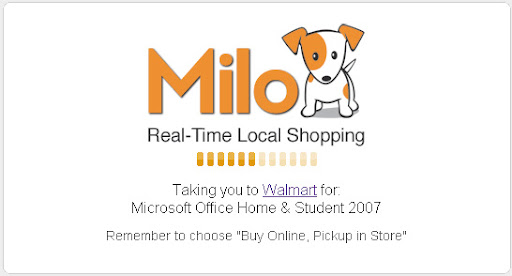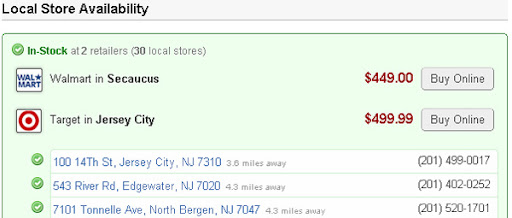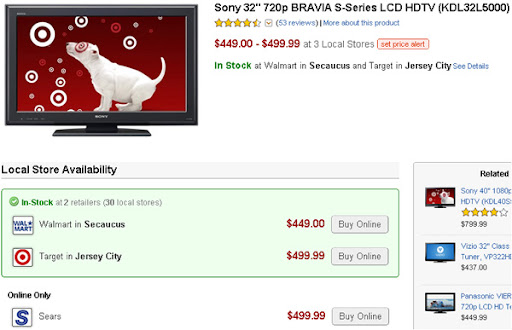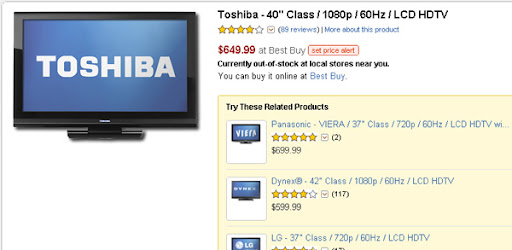Australian retails bridge to the future
Share
Leading up to the Christmas period and with all this discussion around crazy discounts offers on Black Friday [Ed: Evidence bag C], I felt it would be suitable to look at new technology solutions for growing the value of the online retail market.
One of the most interesting examples, which combines online and offline models into a simple platform, is Milo. Milo is one of the fastest growing online retail websites in the US with continuous 70% monthly growth since its launch in December 2008; this month it’s on track to hit one million users and boasts a real-time inventory of 1.5 million products. While this is still a tiny fragment of the online retail market, Milo CEO Jack Abraham advises that while only around 5% of US retail sales are made online, a significant portion of in-store purchases are first researched online.
Research online, buy offline is projected to represent 40% of total retail sales by 2011 – forecasted at $1 trillion – versus ecommerce, which is online 5%, says Jon Callaghan, founder of True Ventures – a venture capital firm.
While the concept of aggregator websites is not new, the Milo concept takes the best of affiliate/price comparison websites and combines this with offline store inventory availability. The other benefit being, Milo solves many of the problems in accounting for offline sales driven by online exposure.

Many existing comparison websites don’t deliver for retailers, as in-store purchases aren’t part of their business model. Milo risks reduced revenue by promoting the in-store pickup, alongside listing store locations with the item in stock. Many larger retailers avoid etail so as not to compete with their franchisees. Milo’s cross-promotion makes it a suitable promotional tool for traditional bricks ‘n’ mortar retailers who are fighting the move online (eg. Harvey Norman). Retailers need to understand the real benefits of a dual platform that can associate offline revenue back to their websites.

The approach to building the platform has been intelligent, with a focus on building partnerships with around 42,000 stores in 30,000 communities across the US. The size of the US market means they are yet to reach the smaller independent operators, but Milo continue to add new retail partners each month. This partnership reliance is the primary stumbling block to its international ambitions. This reliance, however, solves the issue of phoning or driving around to see what is available locally – an issue often compounded at Christmas.

It seems that Milo is a great potential solution but how well does it function compared to individual online retailers, such as Dick Smith, who offer bricks ‘n’ mortar stores and an extensive online store with a similar inventory check.

While the Milo concept may change retail habits, their onsite search
functionality is nothing flash and it is missing some of the
intelligent ‘search as you type’ features, offered by SLI Systems.
Their search feature doesn’t appear to be using cookies and tries to estimate your location by IP address, so it can become annoying having to re-enter your location each time you visit. Repetitive requests can aggravate visitors and these simple aspects are very easy to implement online.
Milo is, however, intelligent when misspelling your current location (eg. sanfransico or new yokrr) as it usually provides the correct location. The only issue seemed to be when using common US towns/cities without state indicators, it did not offer suggestions which would have been helpful (eg. Did you mean?).
Another interesting idea which could benefit local and offline marketing promotions, but doesnt seem to be functioning yet, is ‘Hot Products at Local Stores’. I assume the idea is to start to provide related products based on what other people are buying in your geographic area. A local event such as the Melbourne Cup may highlight binoculars, champagne or Panadol. Other localised events such as a sudden cold snap could mean it highlights Snuggies, cashmere jumpers or ski clothing. The benefit of online retail is that these changes can also be tested in real-time to see how these suggestions affect your conversion rates or improve your ecommerce.
While Milo’s ‘Out of stock suggested alternatives’ feature is unique and not currently offered by Dick Smith, it is let down by not having been linked to local availability levels. You may find that some of the suggested products, still available online, are out of stock locally. While checking stock levels for out of stock suggestions is more technically difficult, it would make it a perfect solution to finding close enough products instantly.

Like most new retail websites Milo’s suggested products algorithm also shows more work is required to iron out the bugs: I fail to see a match between Lancome perfume and a Jaws DVD or Lancing Devices. The feature is not broken, it just seems to have trouble with certain products which is usually related to incorrect or missing product data. Often the weak point of any online store depends on staff adding the correct and complete set of product data.

The final point about the success of any platform, including Milo, is its strategy of trying to build a search engine friendly website structure from the start. Since any new retail website is fighting against established affiliates/aggregators, good search optimisation is essential for success.
Milo is a wonderful product to find your perfect Christmas gift across multiple US retailers and I hope that a similar local product is launched within Australia soon. If bricks ‘n’ mortar retailers are to make as much profit as possible from online traffic they need to consider unique solutions.















